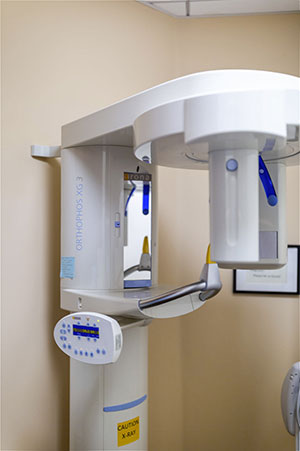Digital x-rays omit up to 90% less radiation than a film x-ray. They also allow us to magnify or manipulate the image to gain a more comprehensive overview of your oral structures. Without the film development process, we can retake an x-ray instantly and share them electronically, all without affecting the environment.
When a digital x-ray fails to provide enough information, Dr. Hakam Al-Samarrai may order a cone beam CT scan. A CBCT scan is another form of digital radiography that gives us an even more detailed look at your oral and maxillofacial structures. With CBCT scans, we get a 3D representation of your teeth, bone, gums, and other soft tissues.
CBCT scans allow us to better determine the root cause of a symptom or problem. They also allow us to develop more precise surgical plans for dental implants, tooth extractions, bone grafting, gum grafting, and many other restorative procedures. In other words, CBCT and 3D imaging have revolutionized the way we perform oral surgery.
An intraoral camera may be useful during your initial examination. This wand-like device takes hundreds of pictures per second to create a more in-depth look at your teeth and gums. We often use an intraoral camera to create a digital impression of your mouth, eliminating the need for messy and uncomfortable impression materials.
The state-of-the-art technology, Solea® laser dentistry, lets us do pain-free/anesthesia-free dental procedures. Solea® is the first and only FDA-cleared CO2 dental laser designed to treat both hard and soft oral tissues (teeth and gums). A wide range of dental issues can be addressed with Solea.
Learn more about laser dentistry.


